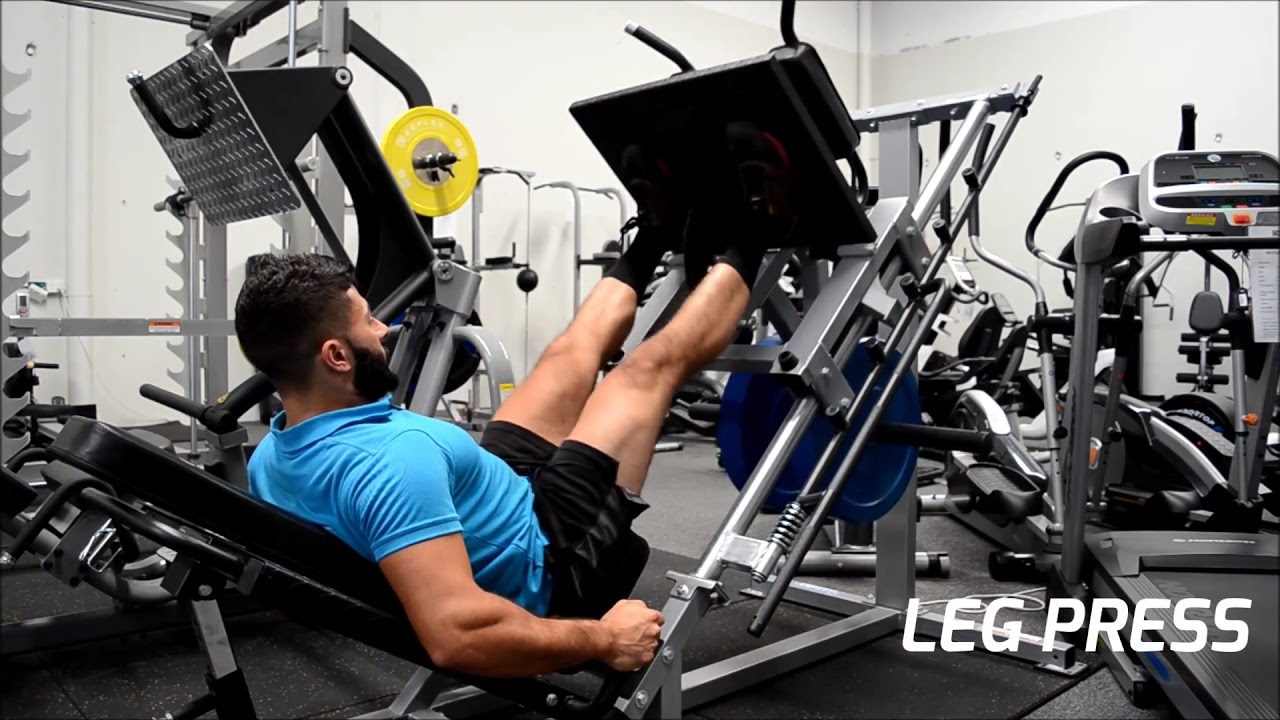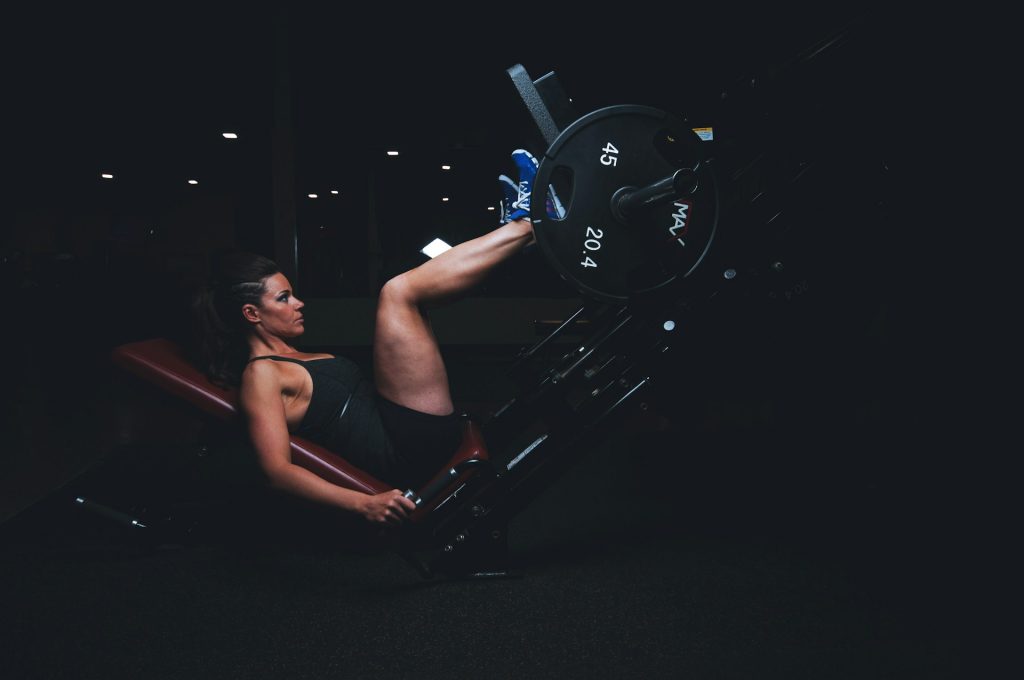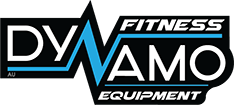
A Beginner Guide on How to Use the Leg Press Machine Like a Pro
Most people use the leg press machine wrong. They pile on too much weight, push with bad form, and risk serious injuries.
If you want stronger legs without hurting your joints, you need to do it right. This guide will show you how to use the leg press machine like a pro.
What is a Leg Press Machine?
The leg press machine builds lower body strength. It allows you to push heavy weight using your legs while keeping your back supported.
Unlike squats, it reduces pressure on your spine. This makes it a safer option for those with back issues. The machine helps isolate leg muscles, leading to better strength and muscle growth.
There are three main types:
-
Seated Leg Press Machine: You sit upright and push the weight forward. This is common in commercial gyms.
-
Inclined Leg Press: It is also called the 45-degree leg press. You lie back at an angle and push the weight upward.
-
Vertical Leg Press: The most intense. You push the weight directly overhead while lying flat.
Each type works the same muscle groups but varies in difficulty and pressure on joints. The inclined version is the most popular.
Muscles Targeted in Leg Press Workouts
The leg press targets key lower body muscles. It focuses on strength, endurance, and muscle development.
Primary muscles engaged:
-
Quadriceps: The front of your thighs. These muscles do most of the work when extending your legs.
-
Hamstrings: The back of your thighs. They control movement as you lower the weight.
-
Glutes: Your buttocks. These muscles help drive the weight up and improve hip stability.
Secondary muscles that support the movement:
-
Calves: They engage to stabilize your feet during the press.
-
Core: Your abs and lower back keep your posture firm and prevent strain.
The leg press is a great alternative to squats. It provides similar benefits but reduces spinal compression. This makes it ideal for beginners, those with back problems, or anyone looking to add variety to leg day.
How to Set Up the Leg Press Machine
Adjust the Seat and Backrest
A proper setup prevents injury and ensures maximum results. Adjust the seat so your knees form a 90-degree angle when your feet are on the platform.
Your lower back must stay flat against the backrest. Avoid arching or rounding your spine. This keeps pressure off your lower back and reduces strain.
Grip the handles for stability. Your knees should stay in line with your feet. Never let them cave inward. This protects your joints from unnecessary stress.
Foot Placement for Maximum Results
Where you place your feet changes which muscles work the most. Keep your feet shoulder-width apart for a balanced workout.
Foot Placement Variations
-
Higher Foot Placement: Puts more focus on the glutes and hamstrings. It is ideal for building posterior chain strength.
-
Lower Foot Placement: Shifts the load to your quadriceps. It is best for those wanting stronger, more defined thighs.
-
Wide Stance: Engages the inner thighs (adductors). It’s great for those looking to improve overall leg balance.
-
Narrow Stance: Activates the outer quads which helps build definition and strength in the outer thighs.
Pick a stance that aligns with your fitness level. Keep your heels flat on the platform at all times.
How to Exactly Use a Leg Press Machine

1. Get Into Position
Your setup determines the success of your workout. Sit down and ensure your back is fully pressed against the backrest. Any gap between your lower back and the seat increases stress on your spine.
Position your feet on the platform at shoulder width. Your knees should be in line with your toes. Avoid placing your feet too high or too low—this affects muscle engagement and puts unnecessary pressure on your joints.
2. Execute the Perfect Leg Press
Step 1: Push Through Your Heels to Lift the Weight
Press your feet into the platform with even pressure. Drive the weight upward using your legs, not your lower back. If you feel strain in your lower spine, readjust your seat or foot position.
Step 2: Extend Legs While Keeping Knees Slightly Bent
Push the weight until your legs are almost straight. Do not fully lock your knees. Locking out transfers the force away from your muscles and directly onto your knee joints, which can lead to serious injuries over time.
Your goal is full leg extension without losing control. Maintain slight tension in your legs at all times.
Step 3: Slowly Lower the Weight
Lower the platform at a controlled pace. Never let the weight drop suddenly—this reduces effectiveness and puts strain on your joints.
Stop when your knees are bent at a 90-degree angle or slightly lower. Going too deep can overstress your lower back, while shallow reps limit muscle activation.
Step 4: Repeat with Controlled Movements
Each rep should be slow and intentional. Do not rush. Momentum reduces muscle engagement and increases injury risk.
Aim for 10-12 reps per set with proper form. If you cannot maintain control, lower the weight. Prioritize good form over lifting heavy.
3. Breathing Techniques for Power & Safety
Inhale deeply as you lower the weight. This fills your lungs and engages your core, giving your body the stability it needs. Holding your breath at this stage can cause dizziness or loss of control.
Exhale forcefully as you push up. This helps generate power and reduces internal pressure. Blowing out air during the lift prevents unnecessary strain on your blood vessels and lowers the risk of dizziness.
Common Mistakes and How to Avoid Them
Many gym-goers misuse the leg press machine. Bad form leads to injuries and limits muscle growth. Fixing these mistakes will improve results and keep your joints safe.
Do not Lock Your Knees
Locking your knees at the top of the movement is dangerous. It puts excessive stress on your knee joints and can cause serious injuries, including hyperextension.
Always keep a slight bend in your knees. This keeps the tension on your muscles rather than your joints. When extending your legs, stop just before full lockout. If you feel pressure in your knees instead of your thighs, you’re pushing too far.
Do not Lift Too Heavy
If you can’t control the weight, it’s too heavy. Shaky movements, reduced range of motion, and the need to push with your hands are all signs you’re overloading the machine.
Lifting too much compromises form and increases injury risk. Start with a manageable weight and increase gradually. Strength builds over time with proper execution.
Using a Shallow Range of Motion
A half-rep does half the work. Many people move the weight only a few inches, missing out on full muscle engagement. This limits growth and strength development.
Lower the weight until your knees form a 90-degree angle or slightly deeper. A full range of motion maximizes muscle activation. Control the movement and avoid bouncing the weight up. If you can’t lower it fully, reduce the load.
Rounding the Lower Back
A rounded back puts stress on your spine. This happens when the seat is set incorrectly or the weight is too heavy. Over time, poor posture can lead to serious back issues.
Keep your back flat against the seat at all times. Adjust the seat so your lower back stays supported. If your hips lift off the pad, the weight is too much. Reduce it and focus on form first, weight second.
Leg Press Variations & Advanced Exercise Techniques
1. Single-Leg Leg Press
Using one leg at a time forces your stabilizer muscles to work harder. This helps fix strength imbalances between your left and right legs. It also improves coordination and prevents dominant-side overuse.
Start with 50% of your normal leg press weight. Perform 10-12 reps per leg for muscle growth or 6-8 reps for strength. Keep movements slow and controlled. If one side feels weaker, focus on proper form before increasing weight.
2. Tempo Training for Strength and Endurance
Changing the speed of each rep increases time under tension (TUT). The longer your muscles stay under strain, the more they grow.
-
Slow Eccentric (Lowering the Weight): Lower the weight over 3-5 seconds to build control and endurance.
-
Explosive Concentric (Pushing the Weight Up): Push up fast to train power and strength.
-
Even Tempo (2 Seconds Up, 2 Seconds Down): Best for overall muscle endurance and hypertrophy.
Slower reps improve muscle control and help prevent injury. Faster, explosive reps build power. Switch tempos based on your fitness goals.
3. Drop Sets & Pyramid Sets for Intensity
If you want to push your legs to failure, drop sets and pyramid sets will do the job. These methods force your muscles to work past fatigue, leading to greater growth.
-
Drop Sets: Perform reps until failure, then reduce weight by 20-30% and keep going. Repeat 2-3 times. This method is ideal for muscle endurance and size.
-
Pyramid Sets: Increase weight each set while decreasing reps (e.g., 12 reps at light weight, 10 reps at medium weight, 8 reps at heavy weight). This improves strength while building endurance.
Leg Press vs. Squats: Which One is Better?
Both exercises build lower body strength, but they work differently. Each has unique benefits.
Leg Press: Why It’s Effective
-
Removes spinal pressure, making it safer for those with back issues.
-
Isolating leg muscles, and leg press allows better focus on quads, hamstrings, and glutes.
-
Easier to control and adjust weight, reducing injury risk.
Squats: Why They Are Essential
-
Engage the core, lower back, and stabilizer muscles for full-body strength.
-
Improve balance, coordination, and functional movement.
-
Train mobility and flexibility by using a full range of motion.
Best Approach: Use Both for Maximum Gains
The leg press helps develop raw leg strength. Squats train athletic movement and stability. Using both in your routine creates stronger, well-balanced legs.
For the best results:
-
Use squats for overall strength and mobility.
-
Use the leg press to isolate and build leg muscles.
-
Train both on different days or within the same session for variety.
There is no one-size-fits-all answer. The best choice depends on your goals, experience, and any injury concerns.
FAQs
How much weight should beginners start with?
Beginners should start with light to moderate weight. A good rule is 50-70% of their body weight. This allows proper form without overloading the joints.
If you struggle to complete 10-12 reps with control, reduce the weight. If it feels too easy, increase it gradually. Always prioritize form over heavy lifting.
Is the leg press machine bad for knees?
No, the leg press is safe when done correctly. Problems arise when using too much weight, locking knees, or placing feet too low on the platform.
Keep your knees aligned with your feet. Never let them cave inward. Stop lowering the weight once your knees form a 90-degree angle to avoid excess stress.
How often should I use the leg press?
It depends on your routine. 2-3 times per week is ideal for building strength. If you’re combining it with squats and other leg exercises, adjust accordingly.
Avoid working the same muscles on back-to-back days. Your legs need time to recover for growth.
Can leg press replace squats?
No, but it complements them. The leg press isolates leg muscles, while squats train the whole body. Both exercises have unique benefits.
If you have back issues, the leg press is a safer alternative. If you want functional strength, squats are better. For maximum results, use both in your workout routine.
Conclusion
Using the leg press machine correctly makes a huge difference. Proper form, foot placement, and controlled movements lead to better results and fewer injuries.
If you are looking for high-quality smith machines or cable machines, visit Dynamo Fitness for the best gym equipment in Australia. Shop online or explore our mega showrooms.
1. Gym Equipment Melbourne Stores.
2. Gym Equipment Sydney Store.
3. Gym Equipment Adelaide Store.
4. Gym Equipment Perth Stores.
5. Gym Equipment Brisbane Store.
6. Gym Equipment Yagoona Store.
Contact our team today if you need more information.
